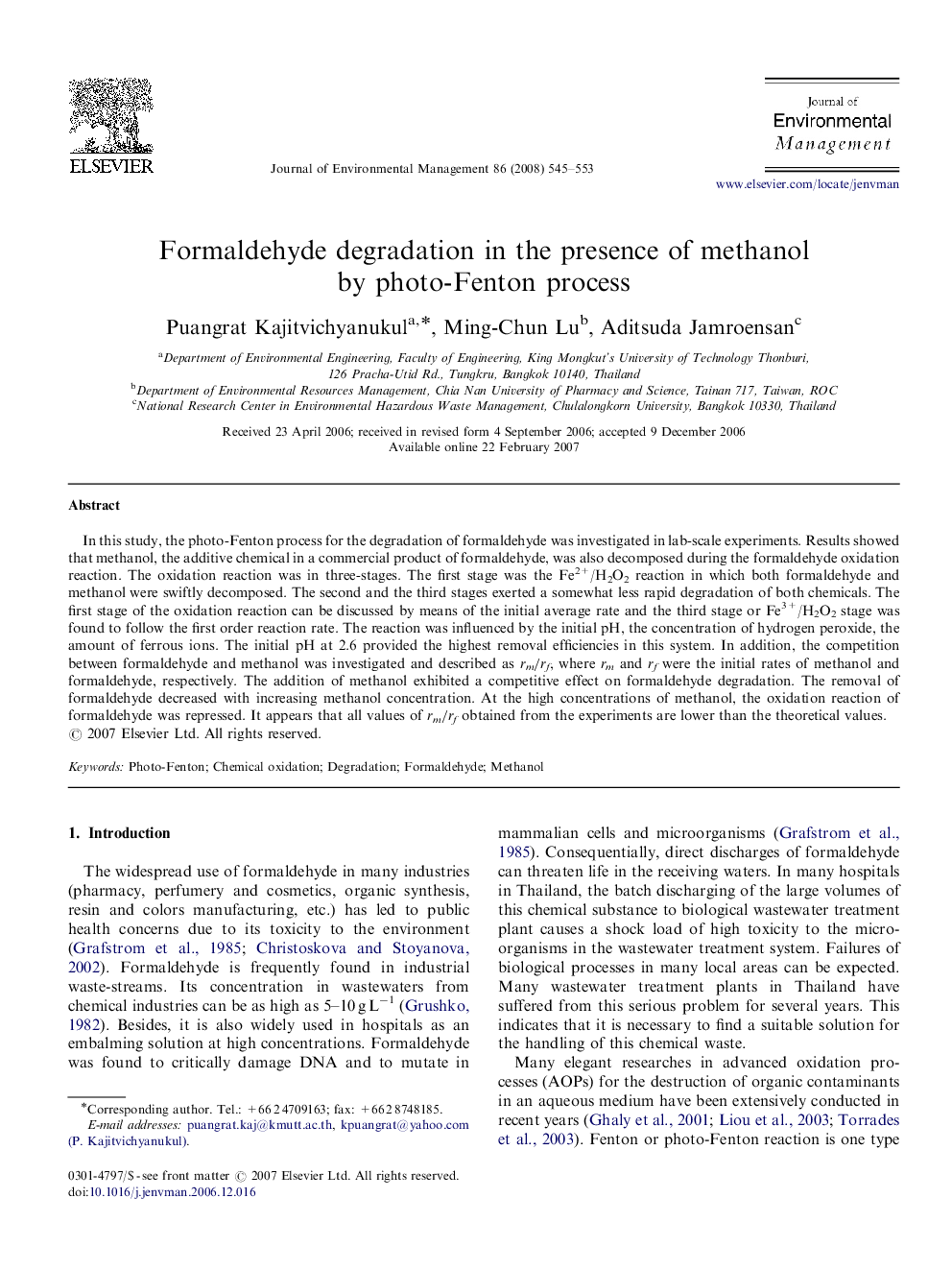| Article ID | Journal | Published Year | Pages | File Type |
|---|---|---|---|---|
| 1058742 | Journal of Environmental Management | 2008 | 9 Pages |
In this study, the photo-Fenton process for the degradation of formaldehyde was investigated in lab-scale experiments. Results showed that methanol, the additive chemical in a commercial product of formaldehyde, was also decomposed during the formaldehyde oxidation reaction. The oxidation reaction was in three-stages. The first stage was the Fe2+/H2O2 reaction in which both formaldehyde and methanol were swiftly decomposed. The second and the third stages exerted a somewhat less rapid degradation of both chemicals. The first stage of the oxidation reaction can be discussed by means of the initial average rate and the third stage or Fe3+/H2O2 stage was found to follow the first order reaction rate. The reaction was influenced by the initial pH, the concentration of hydrogen peroxide, the amount of ferrous ions. The initial pH at 2.6 provided the highest removal efficiencies in this system. In addition, the competition between formaldehyde and methanol was investigated and described as rm/rf, where rm and rf were the initial rates of methanol and formaldehyde, respectively. The addition of methanol exhibited a competitive effect on formaldehyde degradation. The removal of formaldehyde decreased with increasing methanol concentration. At the high concentrations of methanol, the oxidation reaction of formaldehyde was repressed. It appears that all values of rm/rf obtained from the experiments are lower than the theoretical values.
